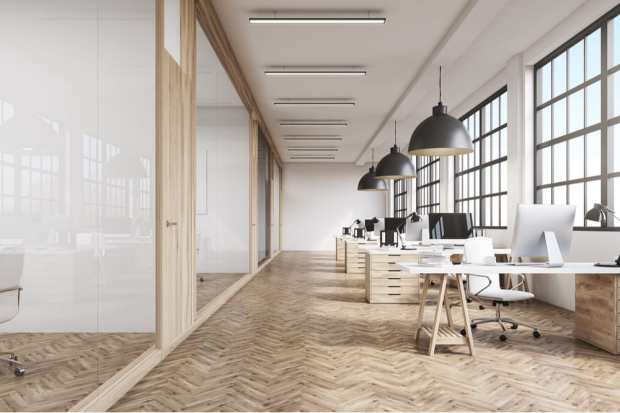Tapping Tech To Redesign How We Use Physical Space Going Forward

Some innovations are formed in a straight line, from a problem encountered by an entrepreneur to a solution that grows into a business.
But sometimes the road is a bit windy, as Density Founder and CEO Andrew Farah told Karen Webster his journey has been.
While Farah has studied information management and database design, his undergraduate degree is in creative writing. In fact, Farah said he is surprised that he founded a business based on technology and design instead of those “being something I did for fun when I went home from work.”
In fact, when Farah first built tracking software to understand human utilization of physical spaces, he wasn’t trying to start a business — just trying to beat the line at his local coffee shop.
And even after he founded Density to accurately and anonymously track humans’ use of a space, the company didn’t look to commercialize it at coffee shops or anything else retail connected. Farah said retail was already a crowded market for systems that count people, meaning that such technology gets dragged into a “a race to the bottom” pricing-wise.
Instead, Farah said that “when we started commercializing our technology and looking at the various markets that it can apply to, we found that this was broadly applicable to large corporate office and commercial real estate.”
There’s big value for those businesses to fully understand how people use spaces, as real estate can be so valuable. Farah said Density’s technology can offer such firms real-time utilization data applicable to “dozens of different things” — from designing cleaning schedules to planning supply orders.
Using mapping to search for greater operational efficiency is a hardly new idea; attempts to modernize how to gather data have been underway for at least a decade.
But Farah said that what’s new is how much the pandemic has both accelerated and expanded such efforts.
“We have a whole new category of customers that we wouldn’t have otherwise gotten to until many years from now that has just accelerated as a result of the urgency related to safety,” he said. “We’re now in warehouses, we’re in fulfillment centers, we’re in distribution centers, we’re in meat-processing plants, casinos, grocery stores — places where we wouldn’t have otherwise gotten to for at least three or four years. But today, there’s just an urgency that [hadn’t] been there before.”
Optimizing Commercial Real Estate
Analyzing how people use space has been around for a long time, but not in ways that modern companies like Density does it.
Farah said that in the old days, commercial real estate firms would hire a person to head down to a site, observe how people were using it and jot down the findings on a clipboard. Those observations would then filter back to an architect who would make a best guess as to what that meant for a building’s design and infrastructure needs.
But modern technology has put such efforts on steroids. When analyzed properly, information that firms like Density gather can translate into really meaningful impacts for businesses.
For example, one Density client came within five days of leasing more office space adjacent to its current location that would have enabled the firm to add 300 employees but cost $3 million over three years. However, the company learned by working with Density that it was only using 38 percent of its current space.
The client nixed the new lease and worked on more efficiently appropriating its current space instead. The business saved a lot of money, but Farah said the real benefit was even broader.
“The thing that’s really cool is that the [building next door] remains available for the next person — which, if you follow it to its logical conclusion, means maybe is potentially down the line, a building or space doesn’t need to get built,” he said.
Don’t Write The Traditional Office’s Obituary Just Yet
And while that’s a pre-pandemic example, Farah said COVID-19 has broadened rather than narrowed the need for Density’s services.
Yes, a spate of Big Tech businesses have already announced plans to let their employees work from home even after the pandemic passes, which could give the impression that the traditional office is becoming passé.
But Farah said that as massive and influential as Big Tech firms are, they’re in many ways outliers when it comes to the world of work and the possible safety accommodations that employers can make.
“These firms are representative of the very few number of companies that can work remotely,” he said. “Something like 48 percent of the U.S. population does not work in a job that allows them to work remotely, and they have to be hands-on. The reality is in the U.S., most businesses are struggling to deal with what it means to bring their workforce back. What we are seeing is that we are expanding more rapidly as a result of safety.”
